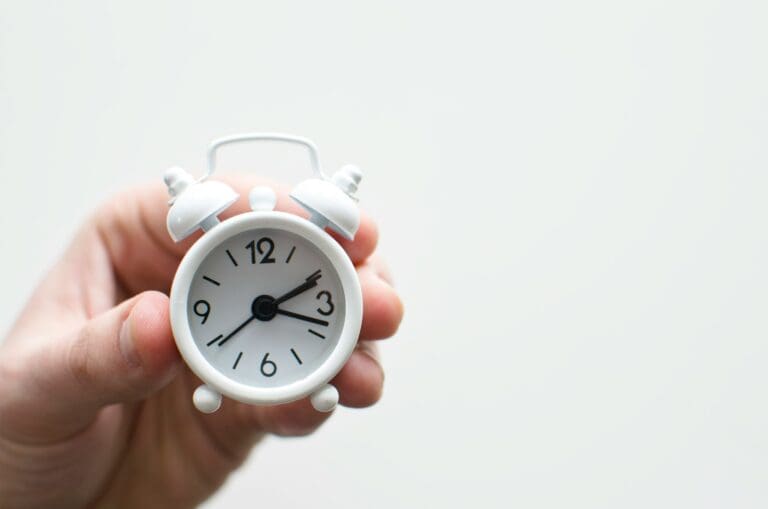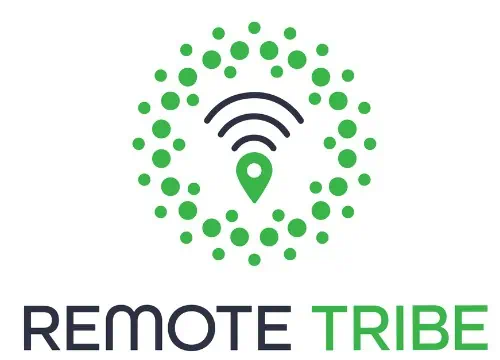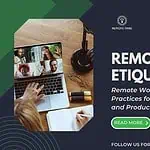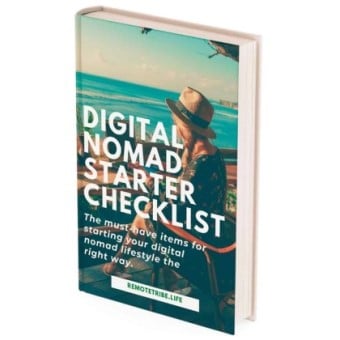If you’re a digital nomad, you’re no stranger to juggling more than just projects and deadlines. Between Slack pings, time zone math, and the not-so-subtle temptation of your bed five feet away, it can be hard to maintain focus and momentum. That freedom you craved? It comes bundled with burnout.
The good news is that you don’t need a full vacation to reset. Micro-breaks are one of the most effective ways to stay sharp, creative, and actually enjoy this lifestyle you’ve built. They’re not about slacking off but about working smarter, protecting your brain, and avoiding the blur of endless screen time.
We’re diving into the science of breaks, options for brain recovery, and how best to work them into your schedule without guilt. Plus, you’ll get a realistic look at the habits that help or hurt. So let’s get your day (and mind) working for you, not against you.
What Are Micro-Breaks (and Why Do They Matter?)

Micro-breaks are short, intentional pauses from work that last anywhere from 30 seconds to 10 minutes. Unlike formal breaks or scheduled lunches, these mini pauses can happen between tasks, during long meetings, or when your mind starts to glaze over mid-email. They’re deceptively simple but grounded in compelling science.
A study published in Nature Mental Health found that even brief mental breaks significantly improve cognitive function and emotional regulation. That’s because stepping away—even for a couple of minutes—gives your brain the refresher it needs to process, refocus, and avoid the buildup of stress that creeps in when you’re glued to one task for too long.
So, why do they matter so much for remote workers?
Because the boundaries between work and rest are blurrier. Traditional offices have natural breaks—hallway chats, coffee runs, or the walk to a boardroom meeting. In a remote setting, it’s easy to sit in the same spot for hours without so much as looking up from your screen.
This might feel productive, but it actually hurts performance in the long run.
Micro-breaks help reset your attention span. It prevents decision fatigue and also boosts creativity. Think of them as system refreshes, but for your brain. Imagine running thirty open tabs on your browser for weeks without restarting your device. Unthinkable, right? Well, your mind needs the same kind of reset every day.
What Counts as a Mini Break?

Here’s where it gets fun: micro-breaks aren’t one-size-fits-all. They can be as low-tech as a stretch or as digital as a one-minute breathing app. The key is that they interrupt mental strain without becoming a full-on distraction spiral.
Some effective examples include:
Physical resets
Stand up, stretch your arms overhead, or walk to a window and look out for a few minutes. Movement re-energizes the brain and relieves screen-related tension.
Visual breaks
Use the 20-20-20 rule. Every 20 minutes, look at something 20 feet away for 20 seconds. It helps prevent eye strain and reorients focus.
Mindfulness micro-moments
Apps like Insight Timer or Calm offer one-minute meditations that can reset your mood without needing a full session.
Creative resets
Sketch, journal, or rearrange your desk. These tactile shifts activate different areas in your brain and reduce the risk of burnout.
Even checking in with a friend via phone call or voice message works as a mini break. Or go outside for a few deep breaths of fresh air. The goal isn’t to lose time but to reset how you spend it.
Tools like TimeOut for Mac or Stretchly for Windows nudge you to take these small breaks regularly. In this way, you won’t risk falling into a breakless sprint where you keep going for hours on end. Then there are productivity suites like Toggl Track or RescueTime. They highlight when you’re hitting concentration limits, and tell you when it’s time to step back for a bit.
Your Brain on Breaks
We often try to power through our workdays as if we’re productivity machines, but the reality is that our brains aren’t built to function in a straight line from 9 to 5. Instead, your brain cycles through attention cycles lasting anywhere from 30 to 90 minutes.
After that? You start relying on stress hormones to keep going. This is where micro-breaks become your most valuable ally.
These short pauses allow your brain’s prefrontal cortex to recover. This is the part of your brain responsible for decision-making and focus. Without breaks, you risk attention residue, which is basically just mental fog that follows when you jump from task to task without pausing.
The perception of time also plays a big role in how energized (or drained) you feel. When you push through your day without stopping, hours either fly by or drag on forever. Needless to say, this can be quite disorienting. It’s better to work in short, deliberate blocks that help your brain keep track of time.
A brief walk outside to stretch your legs resets dopamine levels and boosts your mood. This makes it easier to handle tasks with clarity. So don’t think of breaks as indulgences you can’t afford. They’re cognitive investments.
But what about the creatives or analytical problem-solvers? The default mode network, which is activated during rest, is responsible for idea generation and insight. Stepping away for even a few minutes can lead to your best ideas.
Balancing Digital and Analog Breaks
In an always-connected world, a break doesn’t always mean unplugging completely. Digital tools can absolutely support your well-being. As long as they’re not just another form of consumption.
For remote workers, the trick is to find what actually helps you reset. Some people recharge best with analog options, like watering plants, walking the dog, or doing a few yoga stretches. Others lean into digital tools, like guided meditation apps, lo-fi playlists, or a quick video game to decompress. The sweet spot is finding a mixture of both analog and digital, based on what your brain and body need at the moment.
Still, there’s a fine line between a relaxing digital break and one that accidentally becomes a time drain. It’s easy to say you’re taking five minutes to game and suddenly forty-five have flown by. That blurred boundary is exactly what’s sparked more public concern, with a video game addiction lawsuit drawing attention to how some platforms keep users excessively engaged.
According to TorHoerman Law, developers behind big titles like Fortnite, Call of Duty, and Roblox allegedly use built-in psychological hooks to encourage obsessive gameplay. These include things like endless reward loops and real-time notifications that lead to compulsive behavior. That’s why it’s important to check in with your habits.
Using games to unwind can be refreshing, but only if it actually lets your brain breathe.
Subscribe to our Newsletter
Get The Latest News On Digital Nomad Lifestyle, Remote Working Communities
And Much More.
100% spam free. We never share your email address. Unsubscribe anytime!
How to Choose the Right Break

Even with flexibility, remote workdays can go by in a blur without structure. Building micro-breaks into your day with intention can make a huge difference, especially when matched to the type of work you do.
Here’s what a break-friendly remote workday might look like:
9:00 AM Start work
Task: Deep focus work, like writing, coding, client emails
9:50 AM Break
5-minute stretch or walk around your space.
Why: after 45-50 minutes, cognitive performance starts to dip. A quick physical reset boosts circulation and focus.
10:45 AM Back to work
Task: Creative or collaborative session
11:30 AM Break
10-minute analog break. Water your plants, sketch, or journal.
Why: Stepping away from screens helps prevent sensory overload.
12:30 PM Lunch break
Even a 20-30 minute real lunch (not eaten over your keyboard) can do wonders to prevent burnout.
2:00 PM Afternoon work block
Task: Admin, emails, or planning
2:45 PM Break
5-minute digital brain reset. A short, calming video, or one round of a mobile game (set a timer!).
Why: When used with intention, digital breaks can deliver dopamine in a controlled way that re-energizes you.
4:00 PM Final work block
Task: Wrap-up, planning for tomorrow.
4:30 PM Break
10-minute outdoor movement or just getting some sun.
Why: Natural light helps reset your circadian rhythm and beats sluggishness usually felt at the end of a work day.
Taking all of this into account, it’s important to remember that not every type of work taxes the brain in the same way. Tailoring your micro-breaks to your job can maximize the benefits:
For creative roles (Designers, writers, marketers)
Mental fatigue and creative blocks are common. Try silent activities like doodling, playing an instrument, or sitting in the sun with a book. Studies show that unstructured mental downtime helps with divergent thinking.
For tech/developer roles
Coding or debugging requires sustained attention and logic-heavy focus. Micro-breaks involving light physical activity, like desk yoga or walking pad, can help reset your concentration loop.
For customer support roles
Emotional labor is real. After a difficult call, a sensory reset, like washing your face with cold water, can regulate cortisol (the stress hormone). Breathwork apps like Calm are also useful here.
For admin/operational roles
These jobs often involve multitasking and decision fatigue. Try alternating 50-minute work sprints with 10-minute “do nothing” breaks. Just sit and let your thoughts wander. Research from the University of York found that unfocused mental breaks enhance decision quality later.
For teaching/coaching/consulting roles
If you’re on camera a lot, screen breaks are essential. Use this time to shift your visual field. Looking at faraway objects or lying on your back while unfocusing your eyes helps relieve eye strain and tension in your posture.
The best micro-breaks aren’t about ticking boxes. They’re about tuning into your brain and body. What works for one person might not work for another, and that’s the point. Whether it’s going for a walk, journaling, or just closing your eyes for a minute, the right kind of break can refresh your attention.
Building that awareness into your daily routine isn’t just good for your well-being, but it’s a low-effort way to show up more effectively in your work. And this is true no matter where in the world you happen to be.
Breaking Bad Habits
Let’s be honest—not all breaks are created equal. While some replenish you, others are more draining than they seem. Either that, or they can derail your focus entirely.
Here are a few that do more harm than good:
Endless scrolling
Social media can amplify anxiety and rob your break of recovery value. Grabbing your phone for a “quick” check-in often turns into a rabbit hole that consumes way more time. Instead of resetting your brain, it floods you with more stimulation.
Over-snacking
Using food to cope with boredom? It’s common, but it rarely leaves you feeling refreshed. Spikes in blood sugar inevitably lead to crashes, and these will have you wanting a nap in no time.
Task-switching disguised as breaks
Checking emails or jumping into unrelated work isn’t a rest. A break should detach you from mental labor, not just swap one to-do list for another.
Skipping breaks because you “don’t have time”
Power-through fatigue is something remote workers often deal with. But no breaks don’t give you more time to work. It lowers productivity and increases the chances of mistakes.
Treating breaks like rewards
When you only let yourself take breaks after hitting a milestone, you’re reinforcing a hustle mindset. Micro-breaks should be part of your workflow, not a prize for finishing it.
Multitasking during a break
Trying to relax while also responding to Slack messages does not make a break. Even short moments need your full detachment to work their magic. You should be aiming for quality over quantity.
It’s tempting to want to get the absolute maximum out of every waking hour, but this rarely happens. Instead, use your mini moments of pause to recharge a different system: physical, emotional, sensory, or creative.
Last words
In a remote world full of freedom and flexibility, the biggest challenge is knowing when to rest. Micro-breaks give you structure without rigidity. It’s a way to pace your brain, energy, and time. Not luxuries, but tools to make you more efficient without the burnout.
And as we’ve seen, they’re backed by science, adaptable to your role, and necessary in the type of work that typically blurs the lines between On and Off. Whether you’re coding in Costa Rica or copywriting from a Brooklyn apartment, it pays to take five… a few times a day.
Make your breaks count. Your focus, creativity, and long-term productivity will thank you.
If you want to become a digital nomad or find your crew, sign up for our free newsletter and get upcoming articles straight to your inbox!
We’ve got some great content on our Instagram and on our Facebook Group too where you can network with other nomads from all over the world.
Your Travel Resources Handy In One Place 🗺️
🧳 Travel Insurance
Enjoy peace of mind during traveling and don’t leave your country without good travel insurance. We recommend Insured Nomads or Genki for international travel insurance.
💰Travel Finances
Get your travel finances smart and straight with Wise or Revolut.
🏨 Accommodations
For a short stay check out Booking or Agoda. Staying longer? Take a look at the offers at Airbnb. Hostels are the cheapest option that you can explore at Hostelworld.
🏡 Recommended places for long-term stay
Wanna know the accommodations where we lived during our digital nomad journey? Check out the places we enjoyed the most!
🎫 Book tours
Are you up for taking part in epic guided tours? Book ones you like using GetYourGuide or Viator.
🚗 Rent a car
To find great rental car deals check out Rental Cars and get ready for your car trip!
✈️ Book a flight
For the hottest deals check out Skyscanner, Kayak, Google Flights or WayAway.
🛡️ VPN
To stay safely connected while traveling, don’t forget about a good VPN. We recommend Surfshark or NordVPN.









No Comment! Be the first one.